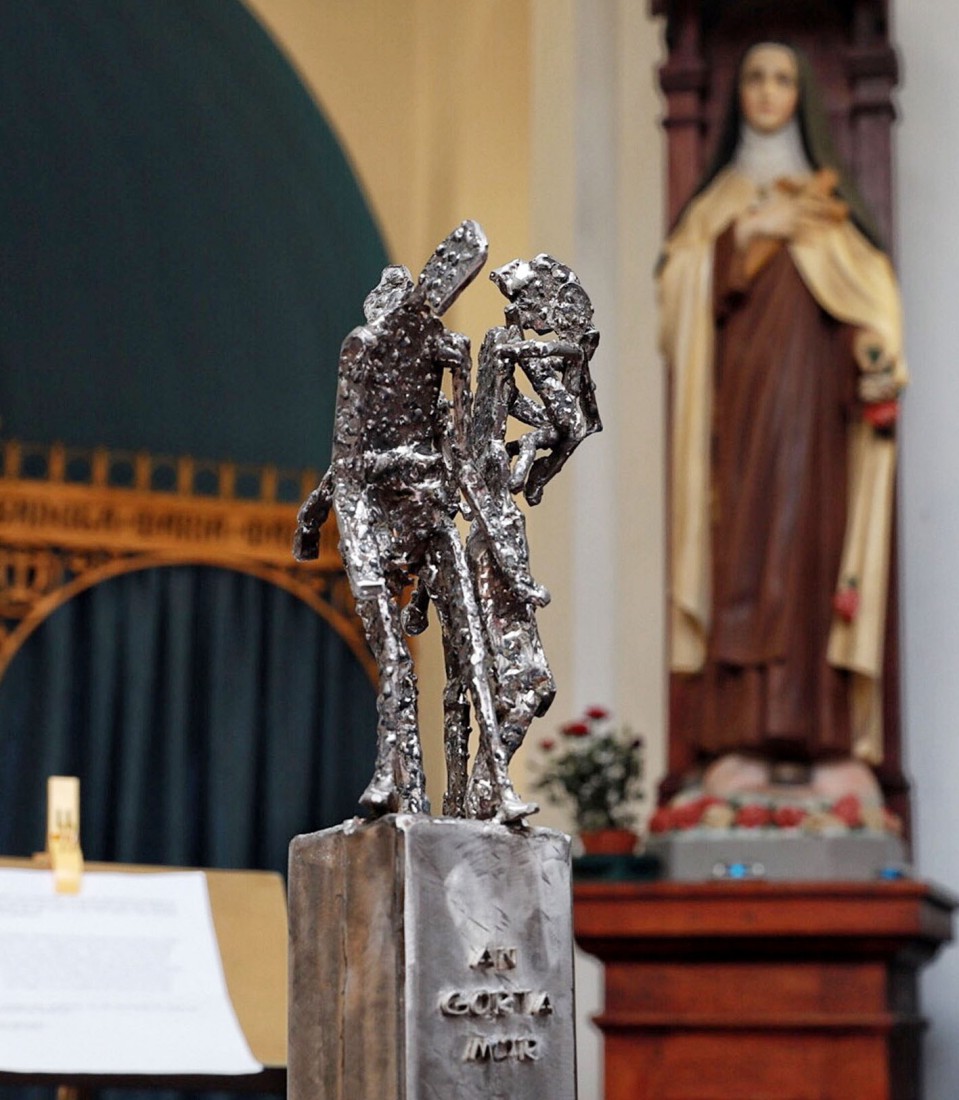A Donegal artist says his monument to the Great Hunger will be for people “of all religions and none”.
John McCarron was speaking ahead of the unveiling of ‘The Tower of Silence’ in Glasgow this Sunday. It will go on display in front of St Mary’s Church in Calton where Celtic Football Club was founded in 1888.
Depicting emaciated figures, the metal sculpture reflects the 100,000 Irish people who sought refuge in Glasgow during the famine of 1845-51.
The design, which was chosen out of dozens of applications, was created by John McCarron in collaboration with fellow sculptor Maurice Harron.
But the memorial has not been without its critics. According to one Scottish MEP the project will be “divisive” and could potentially become a “magnet for controversy”.
Scottish historian Tom Devine has raised questions over the decision to house the piece in the grounds of a Catholic church. He has pointed to the installation of a famine memorial in Glasgow Green in 2018 which remembered all victims of the disaster “be they Catholic, Irish, Protestant Irish or Protestant Gael”.
Referring to Coiste Cuimhneachain An Gorta Mór – the group behind the project – Mr Devine added, “Now one organisation brazenly announces a plan to establish, unhistorically, the ‘first’ memorial to the tragedy in the grounds of a Catholic church in Glasgow.”
Speaking to the Donegal News ahead of this weekend’s unveiling ceremony, Inishowen artist John said his piece was in memory of everyone who lived and died during the famine.
“This is not a Catholic monument and I don’t see why anyone would be offended because the famine did not distinguish what religion anyone was.
“It is a monument for all, for anyone who has any connection or interest in their ancestors who may have come from Ireland to Scotland in the 1840s. It is for those of all religions and none,” said the sculptor.
The Tower of Silence has been three and a half years in the making due the pandemic.
John McCarron said he came upon the open call for design entries on a Celtic FC fan page. From there he and Maurice Harron put forward their proposal. The judges whittled 40 submissions to three before it was explained that the winning sculpture would go in display in St Mary’s Church where Celtic was founded in 1888 by Irish Marist, Brother Walfrid.
From Sligo, Brother Walfrid was so shocked by the poverty he found in Glasgow that he set up the penny dinner scheme where a child got a day’s education and a meal for a penny.
He also saw in 1887 he saw the potential for a full-time Catholic team.
“I do have a huge interest in history and I’ve always felt a great connection between Ireland and Scotland,” said John McCarron.
“But it is because of Maurice Harron, the genius, that the sculpture looks so well. It was built in his foundry in Burt and I am so proud to have been part of it. Collaborating with Maurice has been the highlight of my artistic career.”

A miniature of John McCarron's piece 'The Tower of Silence'. The full size piece will be unveiled in Glasgow tomorrow.
Donegal artist’s monument to be unveiled in Glasgow
Posted: 1:00 pm July 24, 2021
Posted: 1:00 pm July 24, 2021
Advertisement









